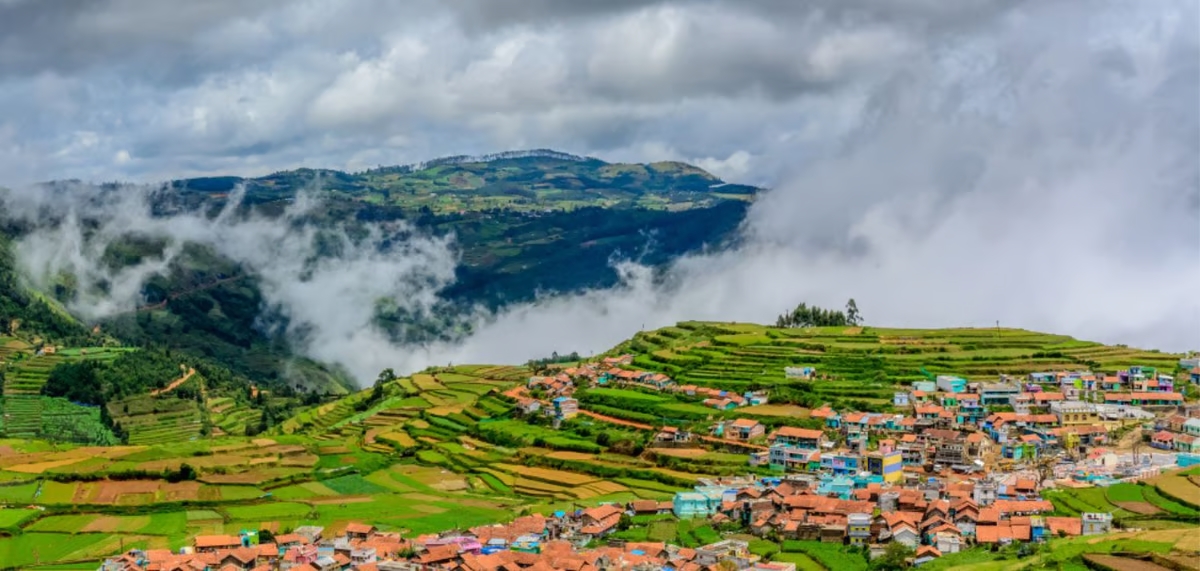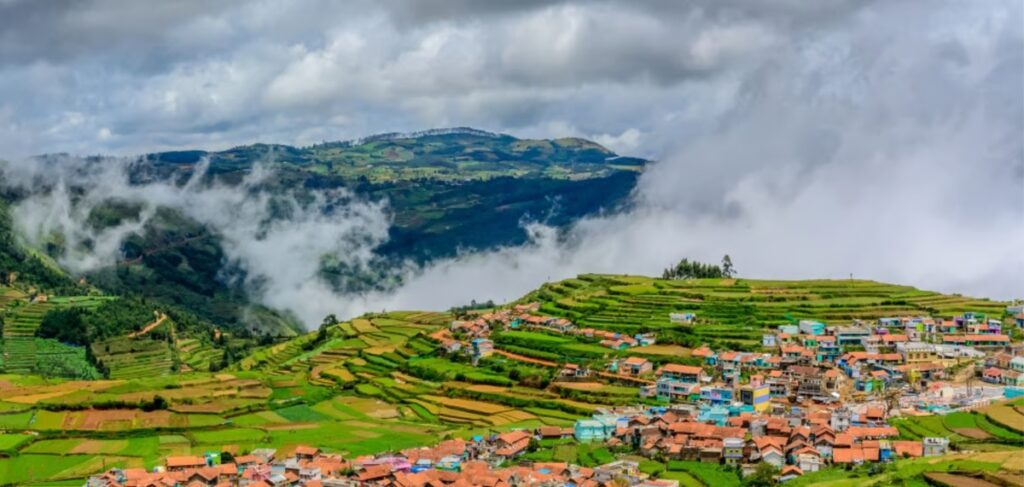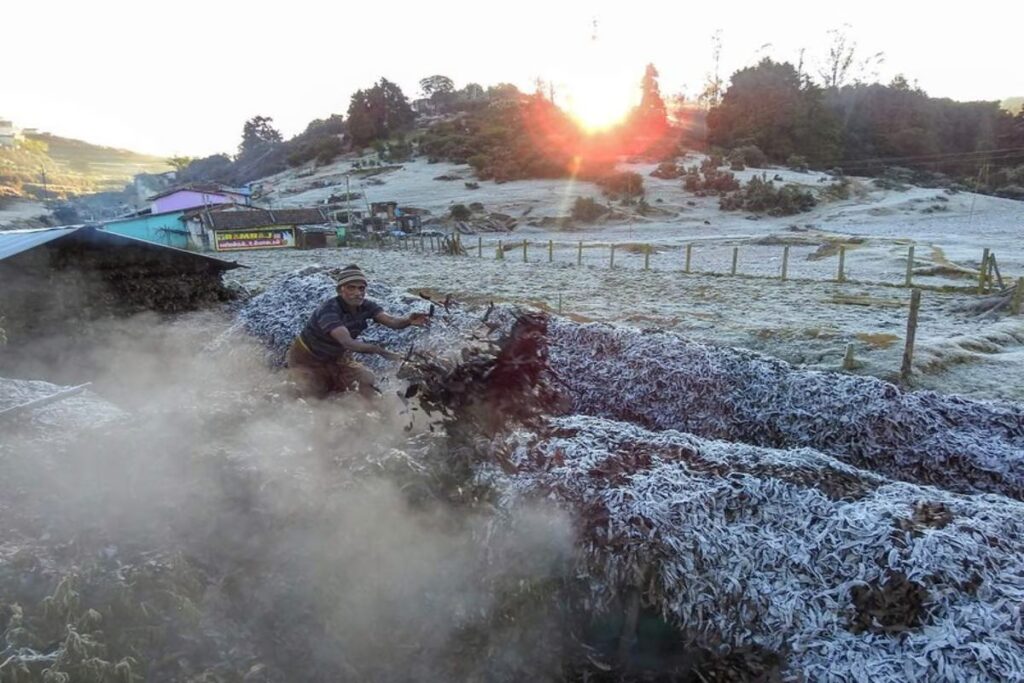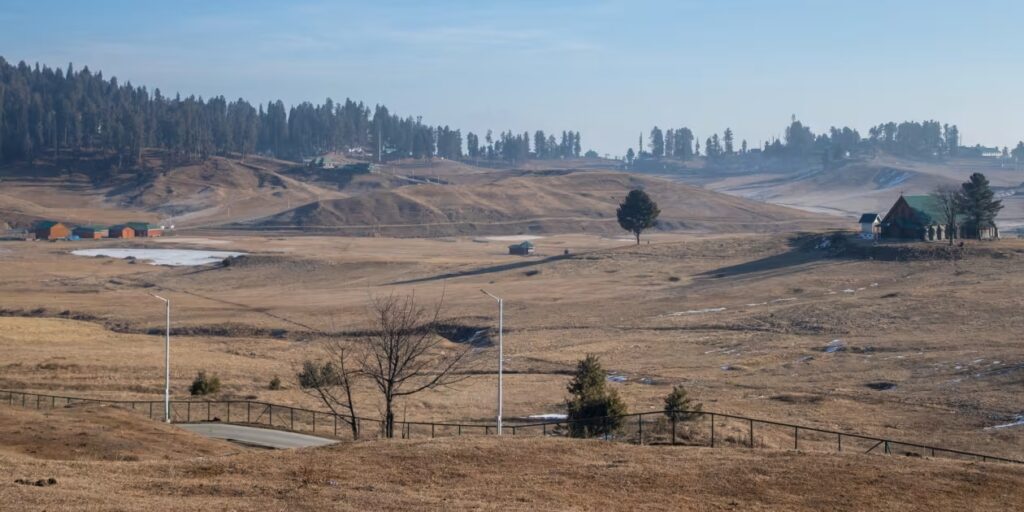Published
6 months agoon


The temperatures in Ooty, located in the Southern Indian state of Tamil Nadu, have plummeted to near-zero levels, casting a cold spell over the region and affecting both residents and agriculture. This turned the idyllic hill station into a mini-Kashmir.
The sharp and unexpected drop in mercury has given rise to health concerns among the local populace. Residents have noted that such a cold and dry spell is typically experienced during November-December. Throughout the affected areas, residents have resorted to lighting bonfires to stay warm, a scene reminiscent of colder months.
Weather in Ooty giving residents the shivers

While residents don the necessary attire to stay warm, the cold conditions pose challenges, especially for two-wheeler commuters, leading to health issues such as difficulty in breathing, severe headaches, and fever. Lush green landscapes now lie beneath a layer of frost, while thick fog hampers visibility, contributing to health concerns among residents grappling with the uncharacteristic chill.
Official data reveals that temperatures dropped to 1 degree Celsius in Kanthal and Thalaikuntha, 2 degrees Celsius in the Botanical Garden, and a relatively warmer 3 degrees Celsius in Sandynallah.
Amid the growing concerns over this ‘unseasonal’ cold gripping the mountains, V. Sivadas of the Nilgiri Environment Social Trust (NEST) attributes the change to global warming and the El Niño effect, emphasizing the necessity for in-depth studies on this climatic anomaly. R. Sukumaran, secretary of a local tea workers union, expresses worry about the adverse impact on tea cultivation due to heavy rains in December and the ongoing cold period.
Kashmir remains snowless

Meanwhile, in a surprising twist of temperature in the northern region, Kashmir witnesses an unprecedented lack of snowfall, with Ladakh also facing dry winter conditions—considered a first by locals. Weather forecasters anticipate potential snowfall by month-end, but the current situation remains grim.
As of end-January, the winter experiences a substantial lack of precipitation, with an 80% deficit in November, a 79% deficit in December, and a 100% deficit in January, as reported by India Today. The India Meteorological Department attributes this anomaly to the absence of active western disturbances during this winter season.
The question arises: Is climate change responsible for the dry winters in Kashmir?
Over the years, Jammu and Kashmir have witnessed a shorter winter duration, shifting from October to March to now being confined to December and January. This transformation is linked to global climate change and warming trends. Additionally, there is a noticeable shift in precipitation patterns, with a decrease in overall snowfall and a shift from snow to rain
Climate experts express concern
Meteorologists indicate that such winter conditions have not been observed in North India for nearly a decade. The situation has been aggravated by dense fog and severe cold in the plains. Meteorologists attribute this ‘abnormal’ cold to the El Nino phenomenon, known for causing significant disruptions in weather patterns globally.
El Nino, a marine phenomenon in the Pacific Ocean’s Mediterranean region, occurs every few years in the coastal waters of Ecuador and Peru on the western coast of South America. It typically lasts for several weeks or months and can occur twice or, in some cases, even thrice in a decade.
Local residents and experts are pointing to global warming and pollution as potential contributors to this unexpected change. The lack of snowfall raises crucial questions about the long-term impact of climate change on regional ecosystems and economies that rely on natural seasonal cycles.
Raihana Habib Kanth, dean (Agriculture) at the Sher-e-Kashmir University of Agricultural Sciences and Technology of Kashmir, emphasizes the importance of snowfall in the Chillai Kalan period as the primary freshwater source for the region before the southwest monsoon sets in. She notes that the prolonged dry spell has reduced water levels in rivers and streams in the region.
Climate Shift ring alarm for collective actions
As the chill persists in Ooty and Kashmir remains devoid of its iconic snowfall, these unusual weather patterns serve as poignant reminders of the far-reaching consequences of climate change.
Our planet, once defined by the predictability of seasons, now grapples with uncertainty, urging us to reflect on the urgent need for global initiatives to combat environmental challenges and safeguard the delicate balance of our interconnected ecosystems.
The weather anomalies witnessed in these regions underscore the imperative of collective action to address the adverse impacts of climate change, reminding us that the consequences extend beyond local landscapes to shape the broader narrative of our planet’s future.


Paris 2024 Olympics: 5 of the most stylish uniforms on show


FM showers special love on Bihar and Andhra Pradesh in Budget 2024, as Opposition leaders cry “Kursi Bachao”


DreameIndia Appoints Manu Sharma as Managing Director to lead its India Operations and Market Expansion


Amazon eyes Swiggy Instamart to boost Quick Commerce in India


Economic Survey urges creation of 78.51 Lakh non-farm jobs annually


Explained: The significance of Savan in India

